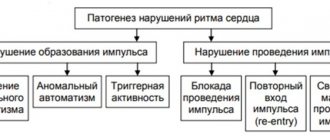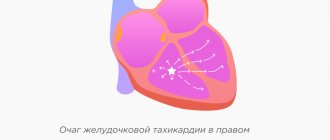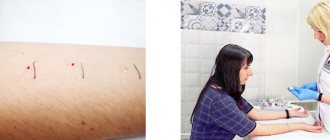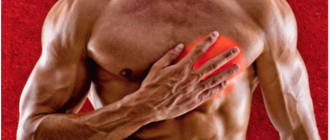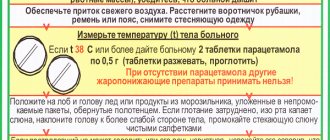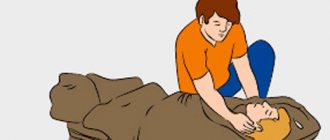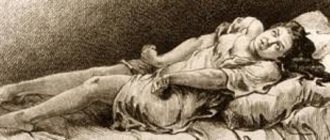Heart block is an abnormal heart rhythm in which the heart beats too slowly. Why is this happening and what to do? Let's find out together with the experts. Each heartbeat occurs in the heart's upper right chamber (atrium) in the sinus node, a bundle of specialized cells that act as the heart's natural pacemaker. When it beats, an electrical signal from the upper chambers goes to the lower chambers, which causes the heart to contract and pump blood. Heart block disrupts this normal rhythm.
Degrees of heart block in adults
Heart block can be first, second, or third degree, depending on the electrical signal abnormality.
First degree heart block. In this case, the electrical impulse still reaches the ventricles, but travels through the AV node more slowly than usual.
Second degree heart block. It is divided into two categories:
- Type I, also called Mobitz block I or Wenckebach AV block, is a less severe form of second-degree heart block in which the electrical signal on its way to the ventricles becomes slower and slower;
- type II, also known as Mobitz block II - in this case, some electrical signals do not reach the ventricles at all, and the heartbeat may be slower than usual.
Third degree heart block. In this embodiment, the electrical signal from the atria to the ventricles is completely blocked. To compensate, part of the ventricles acts as a pacemaker, creating electrical signals. These signals cause the heart to pump blood, but much more slowly than normal.
Publications in the media
Atrioventricular (AV) block of the third degree (complete transverse block) is a complete cessation of the conduction of excitation from the atria to the ventricles. The atria and ventricles excite and contract independently of each other.
Clinical manifestations depend on the frequency of the escape rhythm; with a rare rhythm, a decrease in cardiac output and an increase in blood pressure due to an increase in peripheral vascular resistance are observed, which leads to pronounced disturbances in organ hemodynamics.
Classification: see Atrioventricular block.
Types • Proximal AV block of the third degree (nodal, AV block type A) - the conduction of impulses from the atria to the ventricles is completely interrupted at the level of the atrioventricular node •• The frequency of ventricular contractions is determined by the activity of the substitute pacemaker from the atrioventricular junction and is usually not exceeds 40–50 per minute •• Ventricular complexes are not widened, QRS complex duration is £0.11 s •• Episodes of loss of consciousness are possible •• Complete AV block can be acute (transient) or chronic (permanent). Acute third degree AV block is 3–4 times more likely to complicate the course of posteroinferior MI compared with anterior infarction, lasts in most cases 2–3 days, rarely becomes permanent • Distal third degree AV block (trunk, type B AV block ) occurs if the conduction of impulses from the atria to the ventricles completely stops below the atrioventricular node (the level of the His bundle or the level of the His bundle branches) - the so-called three-fascicular block •• The replacement rhythm source is usually located in one of the branches of the His bundle •• The QRS complexes are widened and deformed, QRS ³0.12 s •• Heart rate 30–40 per minute or less •• Acute distal complete AV block, complicating myocardial infarction of the anterior wall, has an unfavorable prognosis (mortality up to 80%), their occurrence is due to severe damage to the interventricular septum •• Chronic distal AV block of the third degree in half of the cases is caused by sclerotic and degenerative changes in the pathways ••• Idiopathic bilateral fibrosis of the legs - Lenegra's disease (idiopathic chronic heart block), occurring mainly in young and middle age ••• Progressive sclerosis and calcification of the membranous part and the upper part of the muscular part of the interventricular septum - Lev's disease.
ECG identification • Two independent rhythms: a more frequent atrial rhythm (R-R intervals) and a less frequent ventricular rhythm (R-R intervals).
Treatment • Implantation of pacemaker is indicated (see Cardiac pacing), in case of MI - temporary endocardial pacemaker • Intensive therapy is necessary if bradycardia causes Morgagni-Adams-Stokes syndrome (or its equivalents - shock, pulmonary edema), arterial hypotension, anginal pain, progressive decrease Heart rate or increase in ectopic ventricular activity • Temporary endocardial or transthoracic external pacemaker • Drug therapy allows time to prepare for pacemaker: •• atropine 1 mg IV, repeat after 3-5 minutes until effect is achieved or total dose is 0.04 mg/kg •• if there is no effect - aminophylline IV in a slow stream 240–480 mg •• if there is no effect - dopamine 100 mg or epinephrine 1 mg in 250 ml of 5% glucose solution IV, gradually increasing the infusion rate to achieving a minimum sufficient heart rate.
Synonym. Third degree atrioventricular block.
ICD-10 • I44.2 Complete atrioventricular block
Note. Frederick's syndrome (Frederick's phenomenon) is a combination of complete AV block with atrial fibrillation or flutter. The ECG shows waves of flutter (FF) or fibrillation (ff) of the atria, there are no P waves, but the ventricular rhythm is correct - 30-50 per minute, QRS complexes can be widened and deformed. Frederick's syndrome is observed in 10–27% of cases of complete AV block.
Causes of heart block in adults
The most common cause of heart block is a heart attack.
Other causes include heart disease, problems with the structure of the heart (due to defects) and rheumatism. The blockage can also be caused by damage during open heart surgery, as a side effect of certain medications or exposure to toxins. Heart block can be congenital, but it is a rare pathology. The risk of heart block increases with age and the presence of heart disease.
First-degree heart block is common in well-trained athletes, teenagers, young adults, and people with a highly active vagus nerve.
Symptoms of atrioventricular block
Impairments in the patency of impulses can be caused by organic diseases, such as myocardial infarction , cardiomyopathy , coronary heart disease , heart defects , myocarditis , etc., which can lead to damage to the atrioventricular junction, the weakest link of the cardiac conduction system. Also, the reasons may be the use of certain medications, from the group of β-blockers , cardiac glycosides , antiarrhythmic drugs , etc., as well as intense exercise.
At the first stage, there are no noticeable symptoms of atrioventricular block. If cardiac conduction disturbances occur, the patient complains of general weakness, fatigue, dizziness , and shortness of breath . With bradycardia , the patient experiences hot flashes , darkening of the eyes, a feeling of imminent loss of consciousness, and a decrease in blood pressure.
Diagnostics
First, the cardiologist will review the patient's medical history and ask questions about your general health, diet and activity level, and family medical history.
In addition, he will ask about the medications the patient is taking, as well as about bad habits. The doctor will then listen to your heart and check your pulse for signs of heart failure, such as fluid retention in your legs and feet.
In addition, to diagnose heart block, use:
- ECG – this will show the heart rate and rhythm, as well as the timing of electrical signals as they pass through the heart;
- A Holter monitor is a portable ECG that is attached to the patient’s body and records heart activity from 24 to 48 hours;
- An event monitor is another type of portable ECG that is worn over an extended period, where the device records heart activity at specific times rather than continuously;
- Electrophysiology test - This test uses thin flexible wires (catheters) that are placed on the surface of the heart to record its electrical activity.
Diet, nutrition for atrioventricular block
Diet for cardiac arrhythmia
- Efficacy: therapeutic effect after 30 days
- Timing: constantly
- Cost of products: 1700-1800 rubles. in Week
Diet for coronary heart disease
- Efficacy: therapeutic effect after 30 days
- Timing: constantly
- Cost of products: 1700-1800 rubles. in Week
Diet after a heart attack
- Efficacy: therapeutic effect after 2-6 months
- Terms: 2-12 months
- Cost of products: 1800-1900 rubles. in Week
Diet for heart failure
- Efficacy: therapeutic effect after 20 days
- Timing: constantly
- Cost of products: 1700-1800 rubles. in Week
Popular questions and answers
Cardiologist Stanislav Snikhovsky answered our questions about heart block.
What complications can occur with heart block?
Clinically, all heart blocks are manifested by slowing of the pulse.
When the pulse rate decreases, fainting conditions associated with a lack of blood circulation to the brain may develop. Patients may complain of irregular heartbeat, headache and shortness of breath. With complete heart block (pulse about 40 beats per minute or less), Morgagni-Edams-Stokes syndrome develops, which is manifested by convulsions and loss of consciousness. Complete heart block causes rapid development of heart failure and can be fatal.
When to call a doctor at home if you have a heart block?
If there is sudden general weakness or fainting, a rare (less than 50 beats per minute) or very weak pulse, a feeling of irregular heartbeat, sudden shortness of breath and a feeling of lack of air, you should immediately call an ambulance.
Treatment
Treatment of SA (SA, sinoatrial, sinoauricular) blockade of 1, 2, 3 degrees and treatment of AV (AV, atrioventricular) block of 1, 2, 3 degrees is the same - implantation of an electrical pacemaker (pacemaker). A pacemaker is a minicomputer that regulates the heart and prevents it from stopping.
Do not wait for fatal complications, if you have symptoms of bradycardia, consult a doctor today, tomorrow may be too late. Take care of your health and the health of your loved ones.
Online consultations (Skype, Viber, Whats App)
Sign up for a consultation
Types and symptoms of arrhythmias
Cardiac arrhythmia requiring treatment has different symptoms depending on the frequency and rhythm of heart contractions, their effect on intracardiac, cerebral and renal hemodynamics, as well as left ventricular myocardial function. There are the following types of disease.
Bradycardia
With this pathology, the heart rate is less than 60 beats per minute. In trained people whose bodies are accustomed to regular physical activity, bradycardia can be considered normal, but is often a sign of heart problems. The main symptoms of cardiac arrhythmia include weakness, fainting, short-term loss of consciousness, cold sweat, pain in the heart area, as well as dizziness and blood pressure instability.
Tachycardia
With tachycardia, the heart rate exceeds 90 beats per minute. Rhythm disturbances may have a physiological or pathological cause. In the first case, the increase in heart rate is not associated with the presence of diseases of the cardiovascular system. Physiological tachycardia can be considered normal if it is provoked by an increase in physical or emotional stress. Rhythm disturbances in such cases are based on anxiety, a feeling of fear, increased body temperature, sudden adoption of a vertical position and other factors. A short-term increase in heart rate may occur after taking certain medications. In turn, pathological tachycardia is always associated with disturbances in the functioning of the cardiovascular or other body systems. Symptoms of this type of arrhythmias include rapid heartbeat, palpable pulsation of the cervical artery, anxiety, dizziness, and fainting.
Atrial fibrillation
One of the most common types of rhythm disturbances. Atrial fibrillation is characterized by irregular heartbeats, atrial flutter, and irregular contraction of the ventricles. In this case, the heart rate increases to 130-150 (sometimes up to 180) beats per minute. The detection rate of this pathology is 1% of cases among people under 60 years of age and about 30% after 75 years of age. Symptoms of atrial fibrillation include a feeling of interruptions, pain in the heart area, dizziness, a sharp feeling of lack of air, shortness of breath, and fatigue.
Extrasystole
This is a fairly common type of cardiac arrhythmia. It is characterized by extraordinary contractions (extrasystoles), which can begin from the atria or ventricles. According to statistics, a single extrasystole occurs in all people at least once in their life. Even in a healthy person who never complains of heart problems, the norm is considered to be 4% of extraordinary contractions of the atria or ventricles of their total number during the day. Pathological extrasystole develops in approximately 75% of people over 50 years of age. Symptoms of this type of arrhythmia include single or paired premature heart contractions, accompanied by a feeling of a strong push in the chest, a feeling of “fading” of the heart, anxiety, or even lack of air.
It is important to know that frequent episodes of extrasystole are a cause for concern. If this happens constantly, coronary and cerebral blood flow decreases, which can provoke angina pectoris (with ischemic heart disease) and cerebrovascular accident. The presence of extrasystole greatly increases the risk of developing atrial fibrillation and sudden cardiac death.
There are also so-called “silent” cardiac arrhythmias, without symptoms, which have no clinical manifestations and are detected during a physical examination or ECG.
How to treat
The choice of treatment method for AV heart block is determined depending on the degree of the disease. At our center, the Federal Scientific and Clinical Center of Federal Medical and Biological Agency, there are several treatment options. Usually, with 1st degree AV block, only dynamic observation is prescribed. For such cases, a therapeutic department is provided. The patient is under the constant supervision of doctors and undergoes the necessary procedures in a timely manner. For significant 2nd degree AV block and 3rd degree AV block, there is no drug therapy. For such patients, implantation of an electrical pacemaker (pacemaker) is vitally indicated.
Treatment of AV block 3rd degree
Treatment of complete 3rd degree AV block is possible only by implanting a pacemaker. There is no drug treatment for third degree AV block, although some drugs such as atropine are used while waiting for a pacemaker to be implanted.
Treatment of complete AV block, stage 3. impossible without the use of artificial cardiac stimulation, because a possible initial outcome of the disease is the death of the patient, in addition, the quality of life of patients is seriously reduced: attacks of dizziness, fainting, hypoxia are possible...
Symptoms of AV block
1st degree AV block and 2nd degree AV block (especially Mobitz 1) can be asymptomatic, but the manifestation of symptoms depends on the compensatory capabilities of the body. In some cases, even with a slight disturbance of AV conduction (1st degree AV block), patients may experience certain symptoms. AV block 3rd stage. in most cases it has characteristic clinical manifestations.
Pronounced symptoms:
- loss of consciousness
- rare pulse
- lowering blood pressure;
- decreased heart rate;
- weakness, drowsiness;
- chest pain;
- confusion;
- labored breathing;
- dyspnea;
- dizziness;
- headache.
The disease is insidious, so it is important to detect it in a timely manner. To be confident in the healthy functioning of your heart, it is necessary to undergo a cardiac examination in a timely manner, both for children and adults. In our center, Federal Scientific and Clinical Center of Federal Medical and Biological Agency, there are several heart examination programs.
